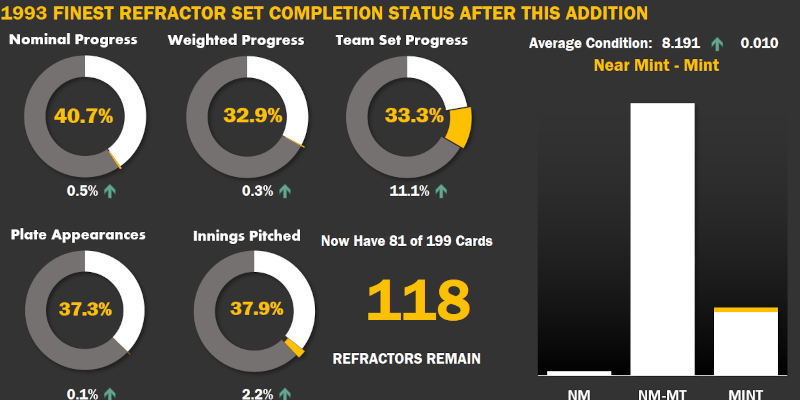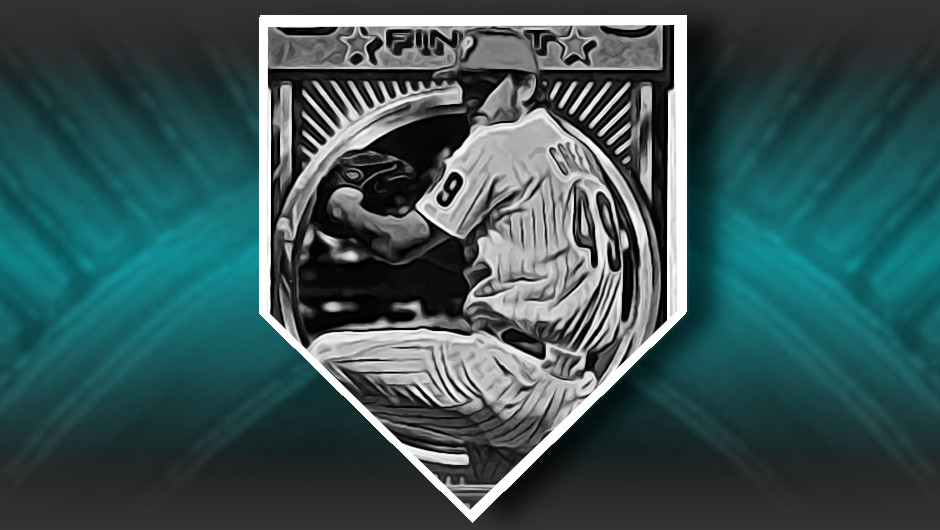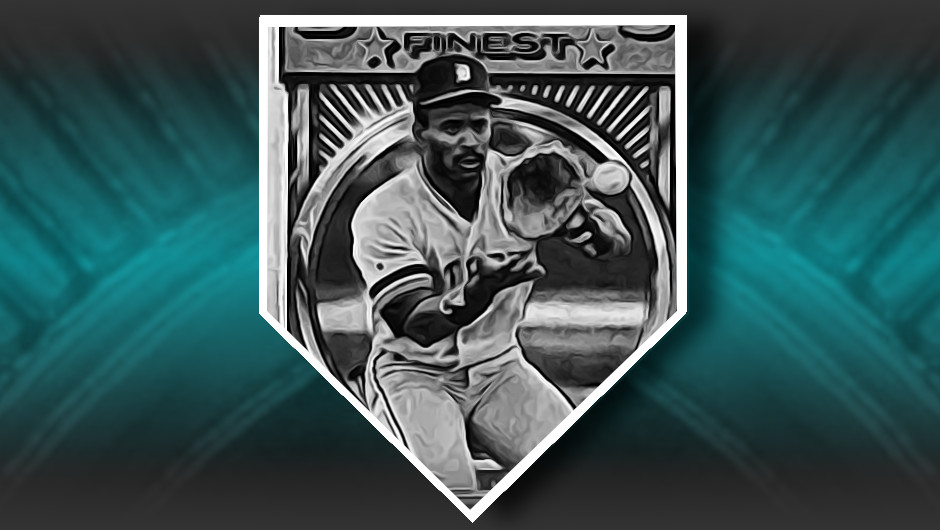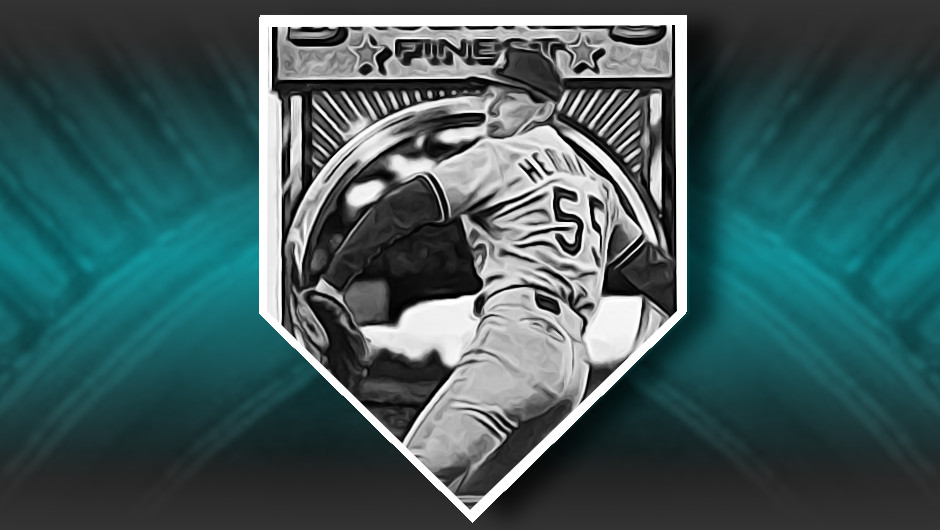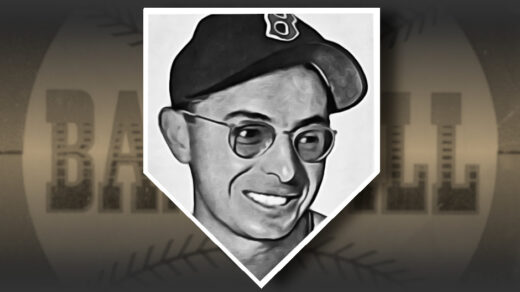Pictured below is one of the original “rainbows” of card collecting; the quartet of Ty Cobb cards that appeared in the 1909 T-206 tobacco card set. The cards have fascinated collectors for a century, offering not only different color backgrounds to choose from but also a wide range of advertisement combinations on the backs of the cards. You can have one of these as the sole item in your collection and have other hobbyists immediately acknowledge that you have assembled a quality collection.

Former pitcher Orel Hershiser probably agrees. According to the “Around the Horn” column on page 110 of the November 1991 Beckett Baseball Card Monthly he is a card collector (One of us! One of us!). The article includes some Q&A with Hershiser about his cards, and he states one of these Cobbs forms the cornerstone of his pile.
Hershiser takes an interest in cards and for a long time carried a view that should not be autographed. This reflects a popular opinion from decades ago when a sizeable portion of the hobby viewed autographed cards as being defaced. I have heard that Hershiser does not like to sign his own cards, possibly for this reason, resulting in disappointed collectors hoping to mail cards directly to him. His willingness to sign has picked up in recent years but his autograph remains somewhat on the challenging side.
Orel and the Koufax Test
Orel Hershiser experienced a career in two parts: He spent the 1980s as one of the toughest pitchers to score against while the following decade saw injuries force him to adapt his style in order to stay on the mound. That first segment was glorious. Among pitchers with at least 1,000 innings, he had the second lowest ERA of the decade. His 2.69 earned runs per 9 innings is more than 40 points better than the next runner up. He holds the MLB record for consecutive scoreless innings after shutting out opponents for 59 frames. Nobody touched him in late 1988 until the Mets scored a couple runs in the playoffs. Hershiser regrouped, proceeding to record another 21 scoreless innings in that year’s postseason on the way to a World Series championship.
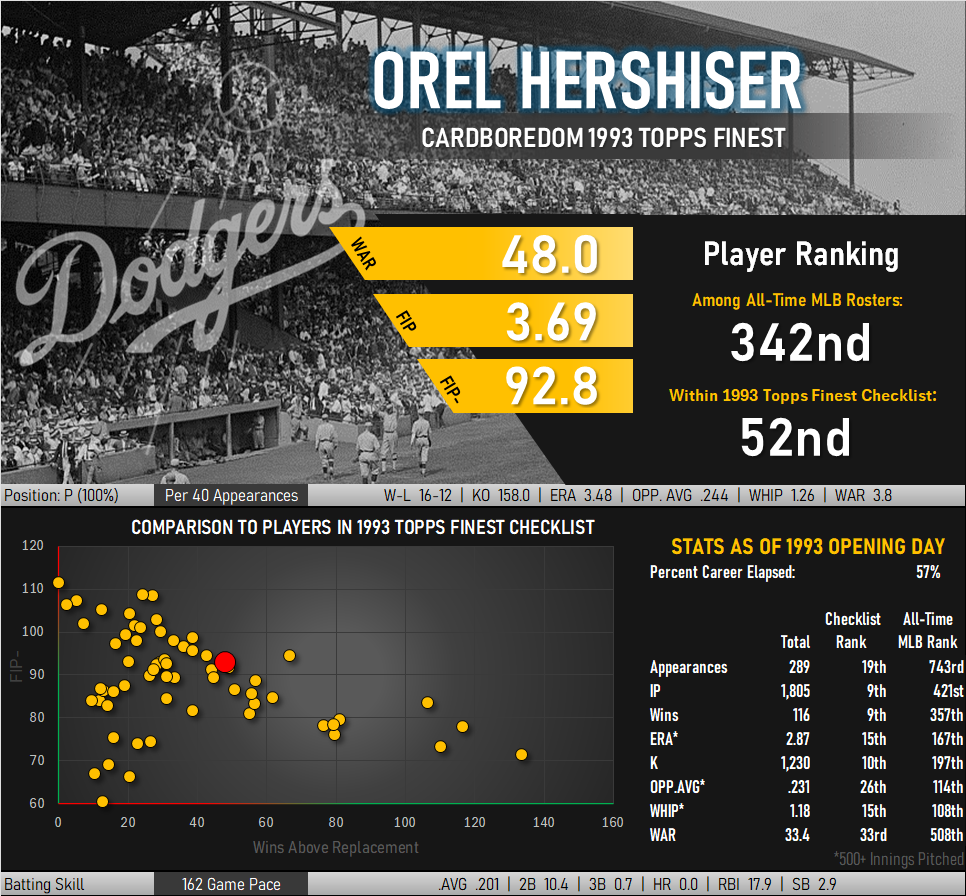
You can’t ask for anything more, unless you are the Los Angeles Dodgers. To that end, all pitchers in blue uniforms are compared to Sandy Koufax. Koufax played just over a decade for the Dodgers, retiring at the top of his game in 1966 after developing arthritis. It was these last six seasons (1961-1966) in which Koufax became Koufax. During this period, he went from having mixed success to being absolutely unhittable. Three (unanimous) Cy Young awards and four no-hitters marked this period, along with the single season record for strikeouts.
This is an absurdly high level to be compared against for any pitcher, though that has not discouraged Dodger scouts from routinely traveling afield to find “the next Koufax.” It’s fun to look at Koufax’s six year peak and compare other potential heirs to his title. How did Hershiser and the Dodger’s other top hurlers stack up?
BEST SIX YEAR PEAKS OF DODGER PITCHERS
| NAME | W-L | SO | OPP. AVG | Shutouts | ERA | FIP- | WAR |
|---|---|---|---|---|---|---|---|
| Sandy Koufax (1961-66) | 129-47 | 1,713 | .194 | 35 | 2.20 | 65.7 | 46.4 |
| Dazzy Vance (1923-28) | 115-65 | 1,204 | .231 | 16 | 2.90 | 72.7 | 36.8 |
| Don Sutton (1971-76) | 110-63 | 1,116 | .215 | 29 | 2.70 | 81.1 | 32.9 |
| Don Newcombe (1949-56) | 112-48 | 807 | .239 | 18 | 3.41 | 84.5 | 27.4 |
| Don Drysdale (1959-64) | 107-79 | 1,390 | .224 | 22 | 2.90 | 82.6 | 34.7 |
| Fernando Valenzuela (1981-86) | 97-68 | 1,258 | .223 | 26 | 2.97 | 81.2 | 32.0 |
| Clayton Kershaw (2011-16) | 100-37 | 1,421 | .195 | 14 | 2.07 | 59.4 | 43.4 |
| Orel Hershiser (1984-89) | 98-64 | 1,006 | .225 | 23 | 2.69 | 83.3 | 28.2 |
A few things stand out from this table. For starters, Koufax was insanely good during this stretch and Clayton Kershaw is apparently his equal. Among the merely mortal Dodger arms, Hershiser appears to be on par with Koufax’s teammate, Don Drysdale. Their similarities extend well beyond the statistical tables, as both were long-shot draft picks that had trouble even getting scouts to take an interest. When Hershiser broke the previous record for scoreless innings, it was Drysdale’s mark that he was surpassing. Orel Hershiser wasn’t Koufax, he was Don Drysdale.
Here’s a Picture of Hershiser’s Refractor, Because You’re Not Going to Get One
Whenever I speak with fellow collectors working on this set, one of their first questions is “Do you have the Hershiser card yet?” The question is understandable, as this card has frustrated set builders for a decade. What makes it so interesting is how the card has snuck up on collectors as being hard to find.
Hershiser cards were popular in the 1980s, a period in which a rare card might have “only” 30,000 copies in existence. Ten bucks and persistence asking dealers about their inventory could yield whatever card you wanted. By the time Finest was released in 1993, Hershiser’s skills were beginning to erode and the hobby had moved its fickle interests to other players. The result was Hershiser’s Finest cards going directly from packs into discount boxes and common bins. The cards seemed easy enough to find and were never identified as being part of the set’s apocryphal short-prints. Simply put, the urge to grab any available example did not exist for much of this card’s existence.
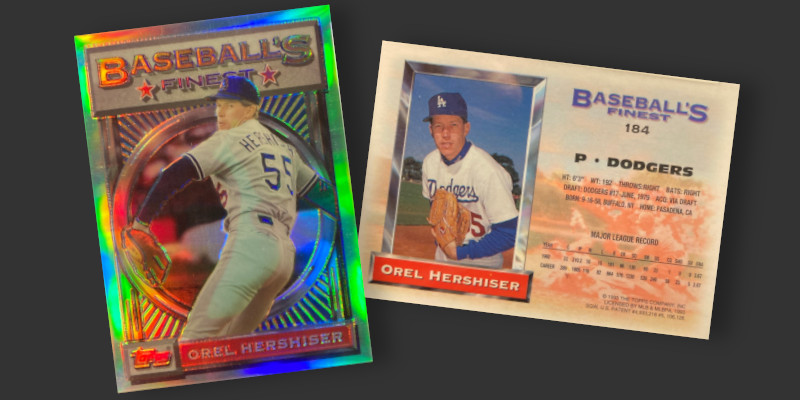
That changed in 2005. A review of older sales data collected by another refractor collector shows little in the way of pricing premiums for the Hershiser card though mid-year. Sales were often seen at prices below $40 until a copy suddenly shot to $152.50 on eBay in August of that year. A handful of cards changed hands at ~$400 through 2007, and then a three year period elapsed without a publicly reported sale. When another Hershiser surfaced in 2010 collectors bid it up to $888. Prices fluctuated wildly over the next decade, but all were in triple digits. This extended period of elevated prices all but assured collectors of having no chance to land a copy at the price point that would be expected for other similar cards.
For quite a while I had no explicit rationale to explain why this particular card generated such fierce competition. While I still do not have direct evidence of what is going on, a conversation with another set builder provided a secondhand explanation. He told me his card collecting travels put him in touch with another refractor collector who has a special affinity for this card. That collector reportedly had more than 80 copies in his possession, effectively locking up somewhere between one quarter and one third of the production run. The card itself might not be rare compared to other refractors, but the combined long-term nature of owners working on sets and the guy accumulating this particular card make the emergence of new examples an infrequent occurrence.
The histogram below shows the average number of annual Hershiser transactions from two sets of data. The information collected by another collector in 2005-2016 shows 3-4 transactions per year. Data I have personally assembled keeps the pattern going with about 3 per year. Along with the card of Jimmy Key, the Hershiser refractor has consistently been the least seen card from the set for much of the past two decades.

Studying these trends led me to aggressively go after one coming from a set that was being broken up. Both my Hershiser and Jimmy Key cards came from the same set. The previous owner and I worked out a deal for Key, but he had already began the process of listing cards that included Hershiser on eBay. That was an exciting auction, as the price doubled in the final second with my bid winning by a fraction of the normal pricing increment. Five bucks more from another collector would have left me looking for this card.
Another collector I interacted with acquired a huge refractor collection for the sole purpose of getting a Hershiser card. The collection included two Hershiser cards, one of which he kept and the other he quickly used to help defray his acquisition cost.
